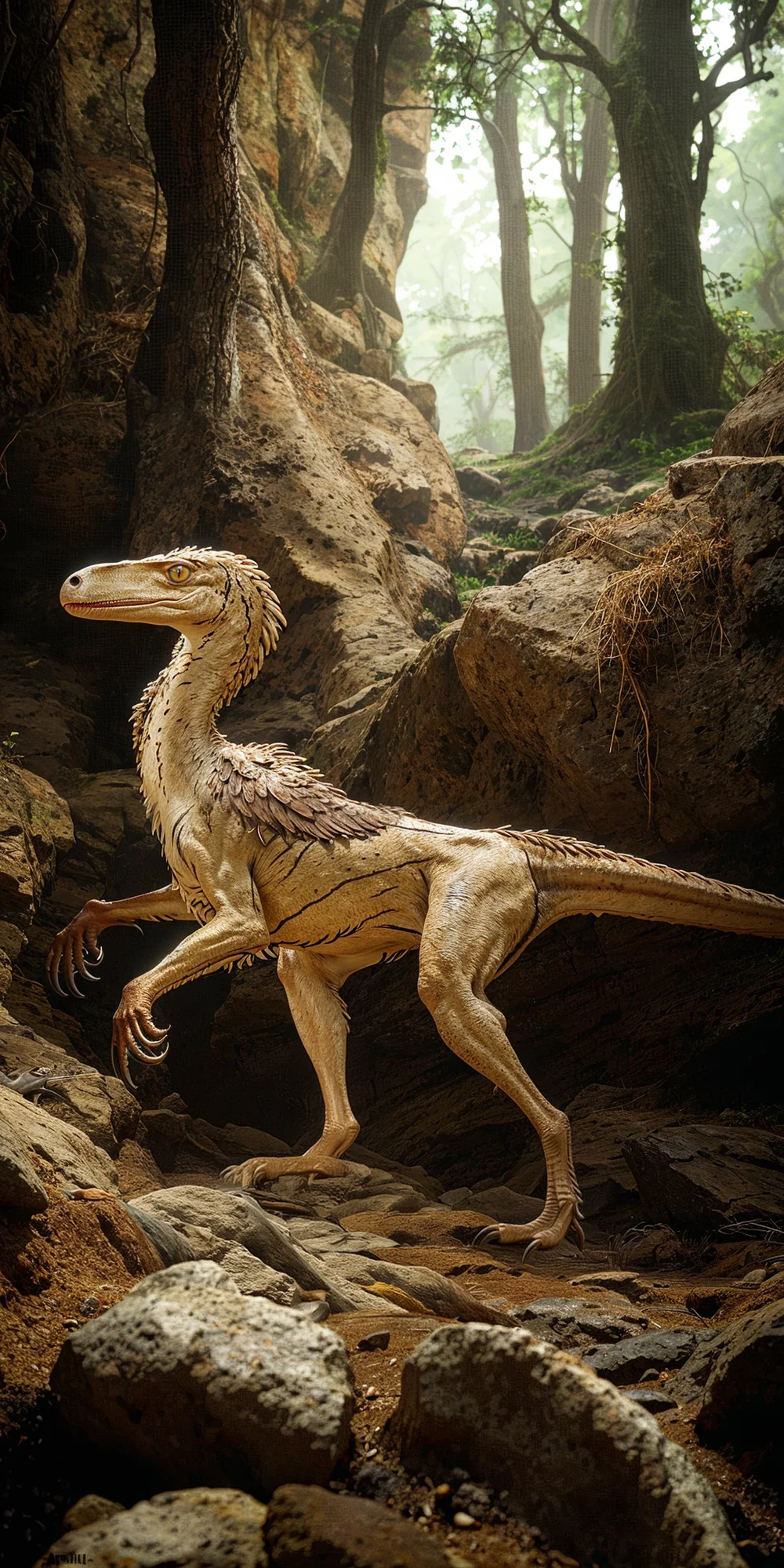The Deinonychus
Deinonychus, commonly known as the "terrible claw," was a genus of dromaeosaurid theropod dinosaur that lived during the Early Cretaceous period. It was a fast and agile predator, measuring around 11 feet long and weighing up to 160 pounds. Deinonychus had sharp, curved claws on both its hands and feet, which it used to grasp and slash its prey. Its long, S-shaped neck supported a large head with sharp teeth, ideal for tearing flesh.

| Deinonychus | |
|---|---|
| Size | 3 feet (0.9 meters) tall at the hip |
| Weight | 160-220 pounds (73-100 kilograms) |
| Speed | 30mph (48 km/h) - 40mph (64 km/h) |
| Key Strength | Sharp claws and agility |
| Biggest Weakness | Smaller size compared to some predators |
| Scientific Name | Deinonychus |
| Family | Dromaeosauridae |
| Habitat | Forests and plains |
| Geography | North America |
| Diet | Carnivorous |
| Lifespan | 20 years - 25 years |

The Deinonychus
Deinonychus, commonly known as the "terrible claw," was a genus of dromaeosaurid theropod dinosaur that lived during the Early Cretaceous period. It was a fast and agile predator, measuring around 11 feet long and weighing up to 160 pounds. Deinonychus had sharp, curved claws on both its hands and feet, which it used to grasp and slash its prey. Its long, S-shaped neck supported a large head with sharp teeth, ideal for tearing flesh.
Fun Fact: Deinonychus is believed to have been a highly intelligent dinosaur, showing evidence of complex social behaviors and communication among individuals of the species.
| Deinonychus | |
|---|---|
| Size | 3 feet (0.9 meters) tall at the hip |
| Weight | 160-220 pounds (73-100 kilograms) |
| Speed | 30mph (48 km/h) - 40mph (64 km/h) |
| Key Strength | Sharp claws and agility |
| Biggest Weakness | Smaller size compared to some predators |
| Scientific Name | Deinonychus |
| Family | Dromaeosauridae |
| Habitat | Forests and plains |
| Geography | North America |
| Diet | Carnivorous |
| Lifespan | 20 years - 25 years |
Deinonychus Matchups
We use AI to simulate matchups between the Deinonychus and other animals. Our simulation considers size, strength, and natural predatory behaviors to determine the most likely outcome.

Can't find the Matchup you want?
Create Your Own MatchupDeinonychus: Diet, Predators, Aggression, and Defensive Behaviors
What did Deinonychus eat?
Deinonychus were carnivorous dinosaurs that primarily fed on small to medium-sized herbivorous dinosaurs, reptiles, and small mammals. They were known to be swift and agile hunters, using their sharp claws and teeth to catch and kill their prey.
Did Deinonychus have any predators?
As apex predators during the Early Cretaceous period, Deinonychus did not have many natural predators. However, they may have occasionally faced competition from other large carnivorous dinosaurs like Utahraptor or Acrocanthosaurus.
Were Deinonychus aggressive?
Deinonychus were likely highly territorial and competitive among their own kind. They were known to exhibit pack hunting behavior, working together to bring down larger prey. Their aggressive nature and social structure allowed them to be successful predators in their ecosystem.
Did Deinonychus fight?
Deinonychus were known to engage in intra-species combat, especially during disputes over territory or mates. These fights would involve displays of dominance, vocalizations, and physical aggression using their sharp claws and teeth. Such interactions were important for establishing the hierarchy within a pack.
How did Deinonychus defend themselves?
Deinonychus used their sharp, curved claws and powerful hind limbs to defend themselves against potential threats. When cornered or threatened, they could deliver swift and lethal strikes with their claws, potentially incapacitating or deterring attackers. Additionally, their pack hunting behavior provided them with the advantage of safety in numbers.
What was the biggest weakness of Deinonychus in a fight?
Despite their agility and formidable claws, Deinonychus were relatively small in size compared to some other theropod dinosaurs. This size disadvantage could make them vulnerable in confrontations with larger predators like Tyrannosaurus rex or Spinosaurus, which could potentially overpower them in a one-on-one battle.
Fun Fact: The discovery of Deinonychus provided key evidence for the link between birds and dinosaurs, as this species exhibited bird-like characteristics such as feathers and a wishbone.
Fun Fact: Deinonychus is famous for its depiction in the movie "Jurassic Park," although in the film it was inaccurately portrayed as much larger and more menacing than it likely was in reality.











